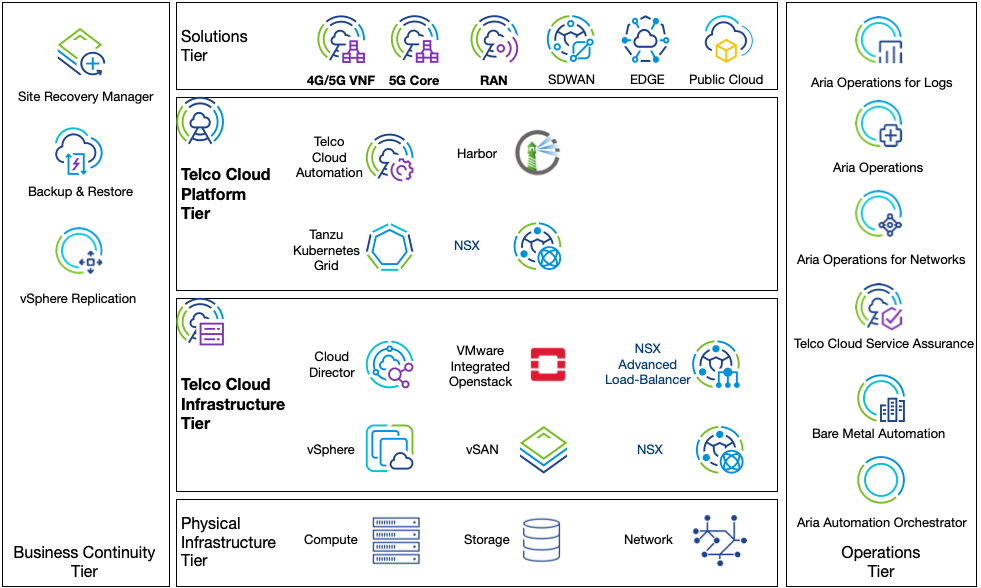The Telco Cloud reference architecture is intended for Communication Service Providers (CSPs) to deliver Telco Grade services in a single environment that supports a wide range of telco Network Functions (NFs) in both Virtual (VM-based) Network Functions (VNFs) and Cloud-Native (Container-based) Network Functions.
The VMware Telco cloud provides an automated approach to deploy telco applications, from legacy applications to 5G Core and RAN functions.
The modularized Telco Cloud architecture is based on various building blocks. This allows for components to be interchanged to create modular, customized design with a specific set of outcomes as determined by the CSPs.
Elements are not exclusively allocated to a single tier, so elements within each tier are flexible and can be consumed as required. The architecture overview diagram represents one way of building a Telco Cloud.
The modules and elements are rigorously tested, beyond the traditional interoperability to ensure stability and wide-ranging compatibility, the ultimate goal is to create an architecture in such a way as to ensure the Communication Service Provider outcomes and goals are achieved.
In relation to the Telco Cloud Abstraction Layers diagram, the following diagram illustrates the building blocks of the Telco Cloud and the VMware products that exist within each tier.

Not all components in each Tier are necessary, the Telco Cloud design and implementation are based on specific customer requirements. In this diagram, Telco Cloud Automation includes the Airgap server (if required) for deploying Tanzu Kubernetes Grid in a restricted environment.